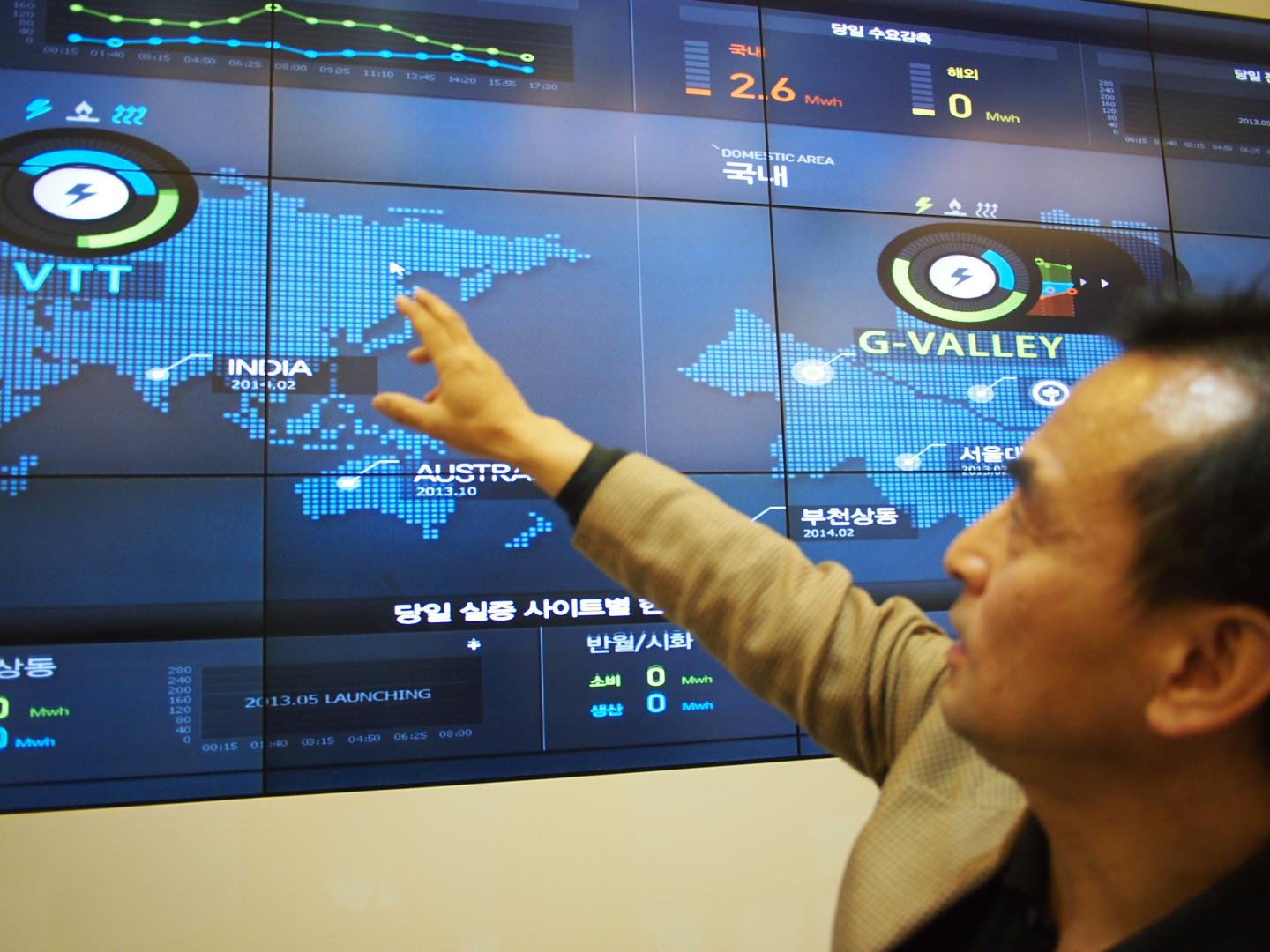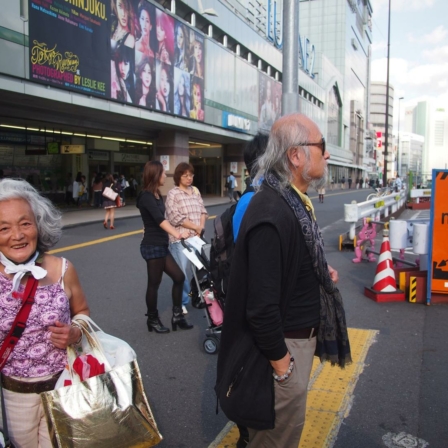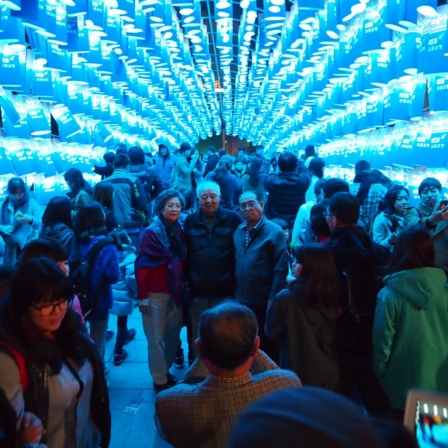South Korea decided to become a model country of sustainability. Then sustainability was turned into business.
Sung-Bong Chang, head of research at the South Korean telecom operator KT, is enthusiastically gesturing towards a large video wall. Operated by a smart grid control, the monitor wall is located in downtown Seoul, but is displaying a live stream from the Aalto University’s Otaniemi campus in Espoo, Finland.
“We are receiving continuous, up-to-date information about the energy and electricity consumption of Otaniemi’s student housing area,” Chang says.
We are looking at a major cooperation project between Samsung’s R&D centre’s Green Technology Team and VTT Technical Research Centre of Finland. The project’s purpose is to test green sustainable microgrid technology, which improves the energy efficiency of buildings.
“Basically, we could control the energy use of a student flat, but this project is only about observation,” Chang says.
The technology used in the project has been developed by the Green Technology Team, working under the Korea-based Samsung C&T R&D centre. Samsung C&T is part of the same Korean group as Samsung Electronics, the largest electronics company in the world, with a larger turnover than that of Apple, Google, and Microsoft combined. Korean products, services, and green technology will soon be everywhere.
I often get asked how South Korea manages to maintain its global competitiveness and adapt with agility to the rapidly changing markets and competition in the squeeze of giant China and innovative Japan. Why is Samsung the world’s leading manufacturer of mobile phones and consumer electronics? Why is the world buying Korean cars, ships, and industry components? Why is South Korea coordinating the green growth and economy in the G20? Because South Korea has a vision of its place in the future.
In late 2000s, South Korea became the world’s leading information society. Not only has the country found solutions to nearly all the problems pertaining to registry services and e-services, which Finland has not moved any closer to solving in several years, it has also turned them into products.
Five years ago, Seoul recognised that the future availability and sufficiency of energy and raw material resources will be crucial questions for South Korea. After all, it has ranked in the top ten of the world’s energy consumers and greenhouse gas producers. It has also been forced to import nearly all the oil and gas it needs.
The national vision and strategy had to be redefined. South Korea celebrated 60 years of independence in 2008. The newly elected president, Lee Mung-bak, announced that green growth would be the country’s vision for the next 60 years.
The vision for green growth is Korea’s way of taking traditional social development and economic dynamism and transforming them into support for a responsible, sustainable, low-carbon economy. How are polluting industrial processes to be improved? How are water services to be developed? How are greenhouse gases and wasteful energy consumption to be significantly reduced?
Korea is a Confucian society that is still hierarchical compared to the West. Policies are defined by leaders. After South Korea made the decision to become the leading model country for small carbon footprints and green growth four years ago, it was time to get down to work.
The International Center for Climate Governance has estimated that by 2013, Korean businesses and the Korean government will have invested nearly €40bn in the development of the green economy. During the last three years, Korean companies investing in green business have grown more than twice as rapidly as traditional companies, offering four times as many jobs.
It has been estimated that investments in green growth have created 27,000 new jobs this year. The green industry is likely to create more than a hundred thousand new jobs by 2015. Companies producing green technology products and services have been calculated to create more than €30 billion in export revenue.
The Koreans have proven themselves to be a pragmatic people: they are creating economic growth and new jobs while also taking responsibility. Environmentalism doesn’t exist as an ideology or a political movement in South Korea as it does in Europe. In the latest parliamentary election, so few people voted for the small Green Party that it was disbanded.
Green development is also visible in the everyday lives of Korean people – literally. Public transport is increasingly operated by gas and fuel-cell vehicles, river bends are refined into refreshment areas, new bicycle lanes are installed, roof gardens are built and nearly every brand is sporting the green eco sign. Stores are packing their goods in designer packages made out of recycled materials.
There is a major difference between the European and Asian ways of doing politics. The dynamics of western politics are created by the tensions between ideologies. In the East, people are first and foremost striving for practicality. Their political parties are built around leaders and personas, not ideas.
Well ahead of last December’s presidential elections, the three candidates were engaged in background negotiations with officials, large-scale industry, business life, and other influential groups – NGOs included.
Korea’s national strategy had been negotiated, decided, and completed before the votes had been counted. Then Koreans, who might just be the most effective people in the world when it comes to putting things into practice, will roll up their sleeves.
This is an edited version of an article first published in Finnish in Helsingin Sanomat on 25th November 2012.





Recommended